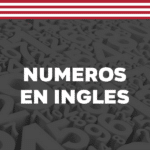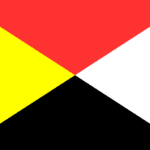Japanese is one of the languages that can be most complicated for people. As with other languages, you need to be consistent and practice every week. Fortunately, the numbers in japanese They are quite easy to learn, so it is a good place to start learning this language.
Learning the numbering of any language is a good way to start and begin learning the basics. The wonderful thing about numbers in Japanese is that it is possible to count to 999 using only 11 words, although it is necessary to learn the rules of numbering to use the 11 words correctly.
This is because in Japanese the numbers do not materialize as in Spanish and other languages. That is, to say 'hundred million' in Spanish it is necessary to group the zeros 100,000,000; While in the Japanese zeros are grouped four by four, so we would see 1 0000 0000.
So that you can learn the numbers in Japanese, below, we will present a series of tips that will be of great help to achieve it.
The differences between Japanese numbers and Chinese numbers
The reason why it is important to note the differences and similarities between the Japanese and Chinese numerals is because the numerals in Japan come from the Chinese model. In this way it is possible to observe that Chinese characters (sinograms) are the same as Japanese kajis for numbers. The only difference is in the way of counting.
For example, in both Chinese sinograms and Japanese kajis, the 1 is designated by 一. But in other numbers we find certain differences, such as the number 100, that Japan uses the Kaji 百 and in China it uses 一百; they both mean 'once a hundred'. Exactly the same happens with the number 1,000, which is 千 in Japanese and 一千 in Chinese.
This same difference is found in numbers like 600 or 2000 and indicates that in Chinese 1 is included to refer to a ten, hundred or thousand, while in Japanese it is not added.
Learn Japanese numbers from 0 to 9
In any language, the first thing you have to do to learn to count is to learn the numbers from 0 to 9. This is thanks to the fact that these numbers are the basis of all the numbers that we can find.
In this sense, the Japanese numbers work exactly the same: they decompose. To give you a better idea, below, I will share a table in which you can see the number, the kanji, hiragana, the romaji transcription and the pronunciation.
| Number | Kanji | hiragana | Romaji | Pronunciation |
| 0 | zero | Rei | king | king |
| 1 | 一 | い ち // い つ | Ichi / itsu | Ichi / itsu |
| 2 | two | To | ni | No |
| 3 | three | San | St. | Sanne |
| 4 | four | し // よ ん | shi / yon | shi / yon |
| 5 | 五 | Your | go | go |
| 6 | 六 | Good | year | year |
| 7 | Seven | し ち // な な | shichi / nana | shichi / nana |
| 8 | Eight | Bee | hachi | hachi |
| 9 | nine | き ゅ う // く | kyü / ku | kyu / ku |
Have you already memorized and practiced the table? Mastering this chart is a great way to start studying the Japanese language. We recommend that you start with the pronunciation and the oral part before you decide to learn the kanji and kana.
In the table above you already have all the bases you need, but there are certain numbers needed to talk about more complex figures. Using the Japanese numbers from the table above we can now see higher numbers. Using the following table you can count all the numbers you want.
| Number | Kanji | hiragana | Romaji | Pronunciation |
| 10 | Ten | twenty | ju | ji |
| 20 | twenty | Niju | niju | niju |
| 30 | thirty | thirty | sanju | sanju |
| 100 | hundred | Hyaku | hyaku | hyaku |
| 1000 | thousand | (I.e. | sen | sen |
| 1 0000 (ten thousand) | Ten thousand | Man | Mon | Mon |
| 10 0000 (one hundred thousand) | One hundred thousand | じ ゅ う ま ん | juman | ju-man |
| 100 0000 (one million) | million | ひ ゃ く ま ん | hyakuman | hyakuman |
| 1000 0000 (ten million | Ten million | い っ せ ん ま ん | issenmann | issenmann |
| 1 0000 0000 (one hundred million) | Billion | deep | read | read |
As you can see in the table above, it is actually quite simple. For example, just put the number 2 and 10 together: two times ten. In this way, we find two components when writing the kanji and in hiragana, but the same happens in romaji. To do this, the 2 always has to be placed before the 10.
The numbers in Japanese are grouped in a different way than those of us who speak Spanish know: groups of four are used instead of groups of three. This is a very simple detail that can only cause some confusion due to the habit we have with numbers, since we have separated them into groups of three since we are little. Finally, so that you do not have to be looking all the time how the numbers are, we leave you here an image that you can download and always carry with you on your mobile.
So far everything is very simple, and although it does not get much more complicated, there are some exceptions that you must learn to be able to use the numbers well.
Exceptions
Fortunately, most exceptions have logic that we can understand, even if we don't know the language a bit.
Examples of exceptions:
To say 300, it is said sanhyakuBut sanbkyaku (三百 in kanji and さ んAndゃ く in hiragana).
To say 600 (六百), you say roppyaku (ろPerfectゃ く) instead of rokuhyaku.
To say 800 (八百), you say happyaku (はPerfectゃ く) instead of hachihyaku.
To say 3000 (三千), you say san sen but saint zen (さ んZeん).
To say 8000 (八千), you say hasson.
To finish, we have prepared this video for you so that you can hear the pronunciation of the numbers live, in the range from 1 to 1000.
Pretty simple right? Here you have a lot of information that will be useful to start learning.






Philosophical meaning in Japanese of "ni"; "Go"; "Ju".
Thank you
Well, thank you very much
: )
Its pronunciation is very accurate, I am interested in learning to speak Japanese I am already starting
Very illustrative, maybe they could guide me where they give Japanese courses
It served me, thank you very much!
now…. someone otaku? : v
I know there is more than one otaku here>: U
Arigatou !!
It served me a lot.